1. Flexible Grouping in Project Based Learning
One of the most powerful differentiation strategies for Project Based Learning is implementing flexible grouping structures. Unlike traditional fixed groups, flexible grouping allows you to strategically arrange and rearrange students based on readiness, interests, learning profiles, and project needs.
Why Flexible Grouping Works
In Project Based Learning environments, projects typically unfold over extended periods with multiple components. This creates natural opportunities to vary grouping strategies throughout the project lifecycle. Sometimes students might work with peers of similar readiness levels to tackle specific challenges. Other times, they might collaborate in mixed-ability groups where strengths and challenges complement each other.
Research shows that flexible grouping increases student engagement and achievement by providing appropriate levels of challenge and support. It also prevents the stigma that can come with fixed ability grouping, as all students experience different grouping arrangements throughout the project.
Implementation Strategies
- Pre-assessment: Before beginning your Project Based Learning unit, assess students’ background knowledge, skills, and interests related to the project topic. Use this data to inform initial grouping decisions.
- Task-based grouping: Create different groups for different project tasks based on student strengths. For example, research tasks might have different groupings than design or presentation tasks.
- Interest-based teams: Allow students to form groups based on which aspect of the project most interests them, creating natural differentiation through choice.
- Strategic partnerships: Create carefully considered pairs that balance strengths and needs for specific project components.
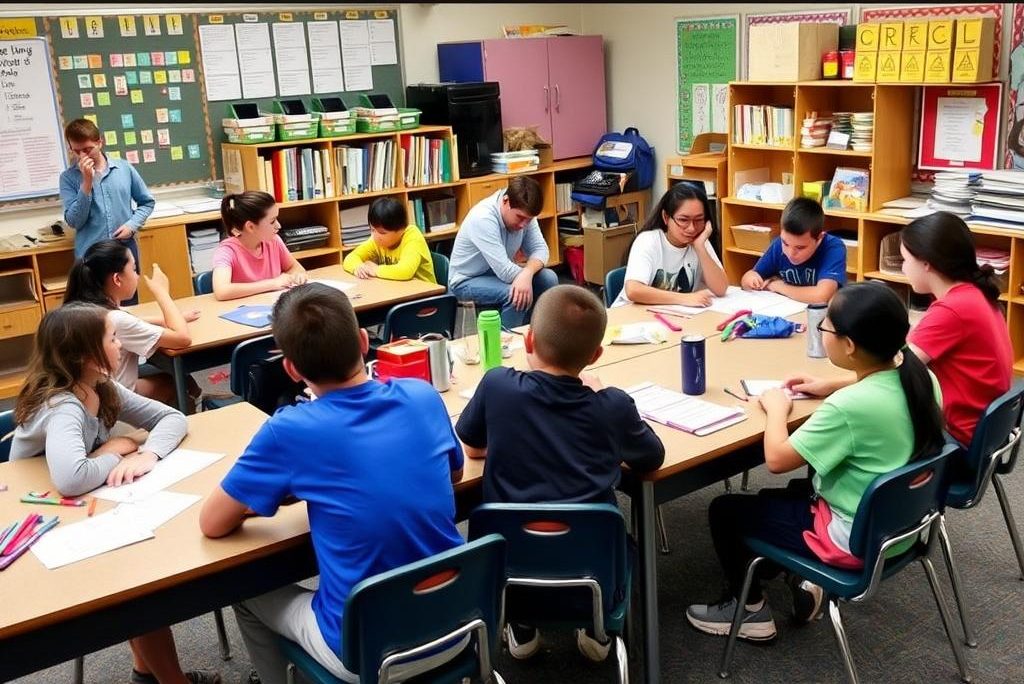
Teacher Example
“In our renewable energy Project Based Learning unit, I initially grouped students by interest in different energy sources—solar, wind, hydroelectric, and geothermal. This allowed them to dive deep into their chosen area. For the engineering design phase, I regrouped them to ensure each team had students with different strengths—some strong in scientific concepts, others in design thinking, and others in communication. For the final presentations, I created mixed groups where students became ‘experts’ sharing knowledge about their original energy source. This flexible approach kept everyone engaged and learning at their appropriate level throughout the project.”
Flexible grouping creates multiple pathways for success within your Project Based Learning framework. By thoughtfully varying how students collaborate, you can address diverse learning needs while maintaining the collaborative spirit that makes Project Based Learning so powerful.
Looking to enhance your differentiation skills? Explore our comprehensive differentiation course for more strategies to implement in your Project Based Learning classroom.
2. Tiered Activities in Project Based Learning
Tiered activities provide different paths to understanding the same essential concepts and skills, making them a perfect fit for Project Based Learning environments. This differentiation strategy allows you to adjust the complexity, depth, or support level of project tasks while keeping all students focused on the same learning goals.
The Power of Tiering
In Project Based Learning, students often work on complex, multi-step processes. Tiering allows you to maintain the authenticity and real-world connections that make Project Based Learning valuable while adjusting the level of challenge to match students’ readiness levels. This approach ensures that all students are appropriately challenged—neither frustrated by work that’s too difficult nor bored by tasks that are too simple.
How to Create Effective Tiers
- Start with the end in mind: Identify the essential understandings and skills all students should develop through the project.
- Analyze student readiness: Determine where students currently stand in relation to these learning goals.
- Design multiple versions: Create variations of project tasks that differ in complexity, abstraction, open-endedness, or support provided.
- Maintain quality across tiers: Ensure that all versions are engaging, respectful, and focused on the same essential learning.
Example of Tiering in Project Based Learning
Project: Community Garden Design
Essential Question: How can we design a sustainable garden that meets our community’s needs?
Tier 1: Students work with provided templates to design garden layouts, selecting from a curated list of plants with clear information about growing requirements. They use simplified formulas to calculate area and costs.
Tier 2: Students create original garden designs using graph paper and rulers, researching plants from a broader database. They calculate area and costs using standard formulas.
Tier 3: Students use digital design software to create garden layouts, independently researching plants and growing zones. They develop comprehensive budgets that include maintenance costs and projected yields.
Notice how all tiers address the same essential learning goals and contribute meaningfully to the project, but with varying levels of complexity, support, and independence.
Implementation Tips
- Use subtle methods for assigning tiers to avoid stigmatizing students.
- Create opportunities for movement between tiers as students progress.
- Consider tiering only portions of the project rather than the entire experience.
- Provide choice within tiers to maintain student agency.
Tiered activities honor the spirit of Project Based Learning by maintaining authentic, meaningful work while ensuring appropriate levels of challenge for all learners. This approach helps every student experience the satisfaction of productive struggle and meaningful achievement.
Ready to implement tiered activities in your classroom?
Our comprehensive guide provides templates, examples, and step-by-step instructions for creating effective tiered activities across all subject areas.
3. Choice Boards in Project Based Learning
Choice boards (also called learning menus or tic-tac-toe boards) offer a powerful way to differentiate within Project Based Learning while honoring student agency. These structured choice systems allow students to select from a variety of activities designed to address the same learning goals through different modalities, interests, or complexity levels.
Why Choice Boards Enhance Project Based Learning
Project Based Learning already emphasizes student voice and choice, making choice boards a natural fit. By incorporating choice boards into your projects, you can:
- Address diverse learning preferences and readiness levels
- Increase student engagement through autonomy
- Provide multiple pathways to demonstrate understanding
- Balance structure with flexibility
- Create natural differentiation through student self-selection
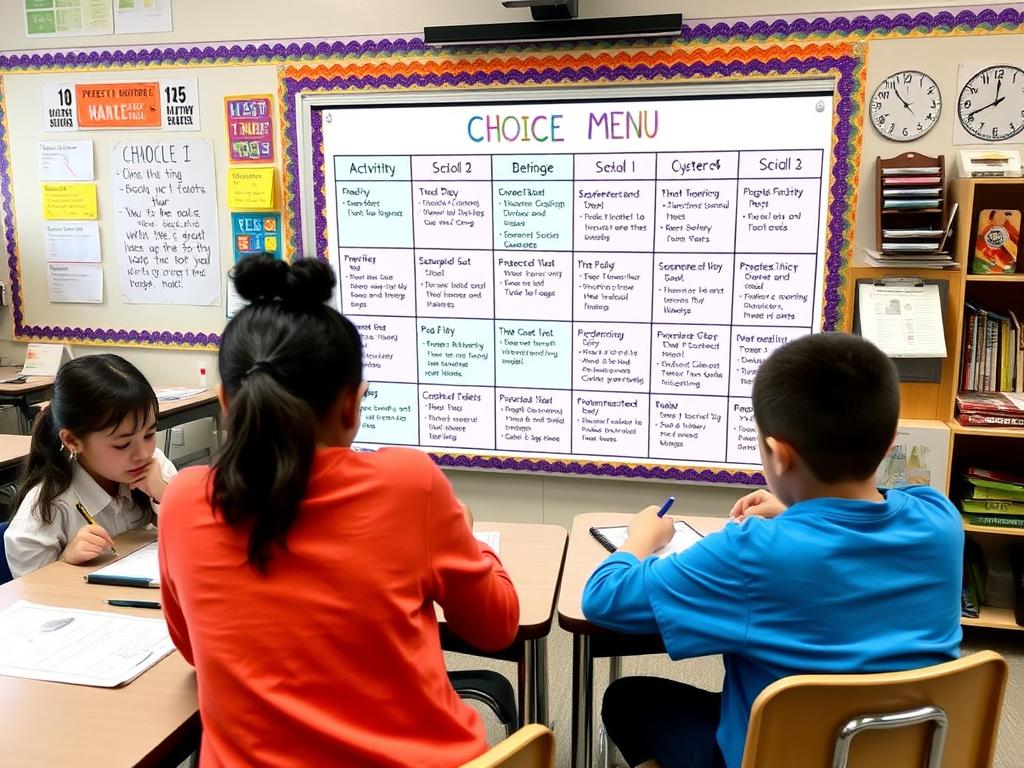
Types of Choice Boards for Project Based Learning
Interest-Based
Activities vary based on student interests or real-world applications, allowing students to connect project content to their personal passions.
Learning Profile-Based
Activities address different learning modalities (visual, auditory, kinesthetic) or intelligence types, helping students work through their strengths.
Readiness-Based
Activities vary in complexity or abstraction level, providing appropriate challenge for students at different readiness levels.
Sample Choice Board for a Historical Project
| Visual/Spatial | Verbal/Linguistic | Logical/Mathematical |
| Create an illustrated timeline showing key events and their impact on different groups of people. | Write a series of journal entries from multiple perspectives, showing different viewpoints on historical events. | Analyze statistical data from the time period and create graphs showing patterns and relationships. |
| Design a museum exhibit that explains the historical period through artifacts, images, and interactive displays. | Develop a podcast script that explores the causes and effects of key historical developments. | Create a decision tree showing how different choices could have led to alternative historical outcomes. |
| Create a map showing geographical factors that influenced historical events and how they shaped outcomes. | Research and write a comparative analysis of primary sources from different perspectives. | Develop a simulation or model that demonstrates cause-and-effect relationships in historical events. |
Implementation Tips
- Ensure all options lead to the same essential understandings and skills
- Include clear directions, expectations, and assessment criteria for each option
- Consider requiring students to select options that stretch them beyond their comfort zones
- Use choice boards for specific project components rather than the entire project
- Provide varying levels of structure within choices to support different learners
Choice boards transform differentiation from something you do to students into something you do with them. By offering meaningful choices within your Project Based Learning experiences, you empower students to take ownership of their learning while ensuring they all reach essential learning goals.
Want to implement choice boards effectively in your Project Based Learning classroom? Explore our teacher resources for templates and examples you can adapt for your specific content area.
4. Scaffolded Resources in Project Based Learning
Project Based Learning often involves complex, multi-step processes that can challenge students at different readiness levels. Scaffolded resources provide varying levels of support that can be gradually removed as students develop independence, making this differentiation strategy essential for inclusive Project Based Learning environments.
The Scaffolding Approach
Think of scaffolding as the temporary supports that help students bridge the gap between what they can do independently and what they can achieve with assistance. In Project Based Learning, effective scaffolding maintains the cognitive demand and authenticity of tasks while providing appropriate support for students who need it.
Types of Scaffolds for Project Based Learning
Process Scaffolds
- Project planning templates with varying levels of detail
- Task cards breaking complex processes into manageable steps
- Checklists for self-monitoring progress
- Graphic organizers for planning and organizing information
- Research guides with structured questions
Content Scaffolds
- Vocabulary guides with definitions and examples
- Background knowledge resources at different reading levels
- Sentence starters for written components
- Annotated examples of similar work
- Reference sheets with key concepts and formulas
Creating a Scaffolding Progression
Effective scaffolding in Project Based Learning isn’t about creating permanent supports—it’s about gradually removing assistance as students develop independence. Consider creating a progression of scaffolds that can be adjusted based on individual student needs:
| Level of Support | Example for Research Component | Example for Presentation Component |
| High Support | Guided research with specific sources provided, structured note-taking templates, and frequent check-ins | Complete presentation outline with sentence starters, visual examples, and practice with feedback |
| Medium Support | Curated list of sources, general note-taking guide, and scheduled check-ins | Presentation structure guide with key points to address and peer feedback protocol |
| Low Support | Suggested search strategies, criteria for evaluating sources, and optional check-ins | Presentation success criteria and self-assessment rubric |
Implementation Strategies
- Pre-assess to target scaffolds: Determine which students need which supports before the project begins.
- Create a resource library: Develop a collection of scaffolded resources that students can access as needed.
- Use technology: Leverage digital tools that provide built-in scaffolding options.
- Plan for gradual release: Intentionally remove scaffolds as students demonstrate readiness.
- Teach students to self-advocate: Help students recognize when they need support and how to access it.
“The art of scaffolding in Project Based Learning is providing just enough support to enable success without removing the productive struggle that leads to deep learning. When done well, students don’t even realize they’re being supported differently—they just know they’re able to accomplish challenging work.”
Scaffolded resources ensure that all students can participate meaningfully in Project Based Learning experiences, regardless of their starting points. By thoughtfully designing supports that can be adjusted to meet individual needs, you create an inclusive learning environment where every student can experience success.
Need ready-to-use scaffolded resources?
Our differentiation toolkit includes customizable templates, graphic organizers, and scaffolding progressions specifically designed for Project Based Learning environments.
5. Personalized Learning Goals in Project Based Learning
While Project Based Learning typically centers around shared driving questions and final products, personalized learning goals allow you to differentiate the specific skills and knowledge each student develops throughout the process. This strategy honors the collaborative nature of Project Based Learning while ensuring individual growth and challenge.
The Power of Personalization
In diverse classrooms, students bring varying strengths, needs, and prior knowledge to each project. Personalized learning goals acknowledge these differences by establishing individual targets that:
- Address specific areas for growth
- Build on existing strengths
- Connect to students’ interests and aspirations
- Provide appropriate levels of challenge
- Foster metacognition and self-regulation
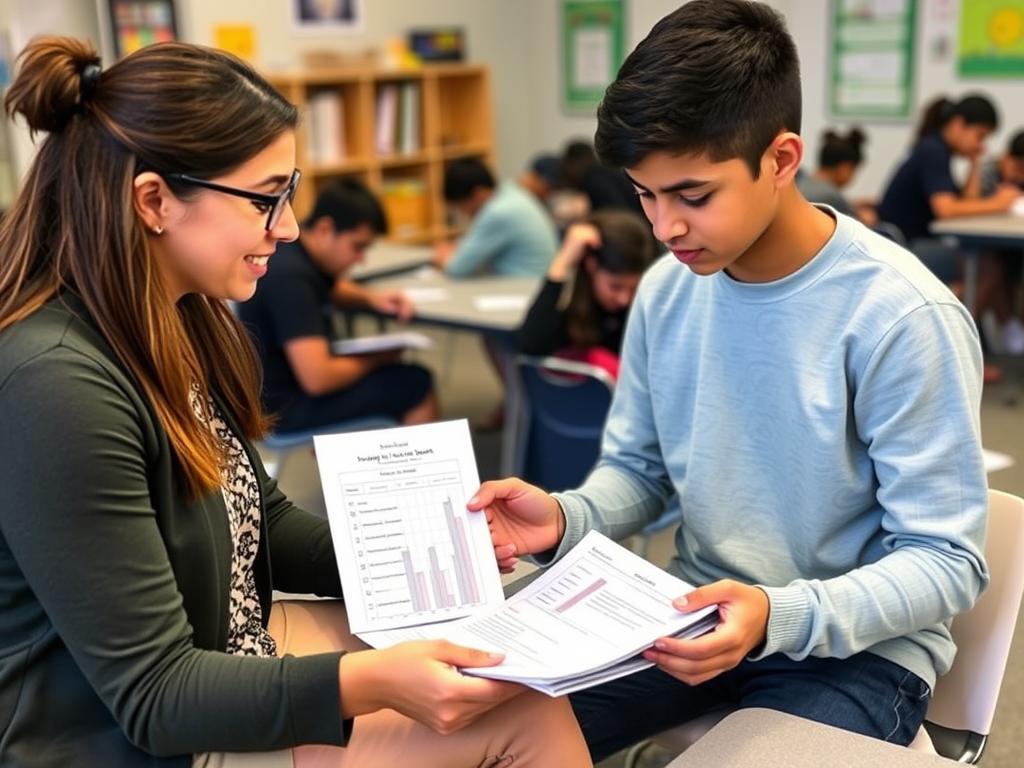
Implementing Personalized Learning Goals
Step 1: Establish Baseline Understanding
Before the project begins, assess students’ current knowledge, skills, and interests related to the project content and process. This could include:
- Pre-assessments of content knowledge
- Skills inventories
- Interest surveys
- Self-assessments of strengths and areas for growth
Step 2: Co-Create Individual Goals
Work with each student to establish 2-3 specific, measurable goals that they’ll focus on throughout the project. These might include:
Content Goals
“I will be able to explain how different energy sources impact the environment by comparing their carbon footprints.”
Skill Goals
“I will improve my data visualization skills by creating three different types of graphs to represent my findings.”
Process Goals
“I will strengthen my time management by creating and following a detailed project timeline with daily checkpoints.”
Step 3: Create Tracking Systems
Develop methods for students to monitor progress toward their personalized goals:
- Digital or physical goal trackers
- Reflection journals
- Progress conferences
- Portfolio documentation
Step 4: Provide Targeted Support
Offer resources, feedback, and instruction specifically aligned to students’ personalized goals:
- Mini-lessons for small groups with similar goals
- Curated resources targeted to specific learning needs
- Peer mentoring partnerships
- Individual conferences and coaching
Step 5: Celebrate Growth
Create opportunities for students to recognize and share their individual progress:
- Goal achievement celebrations
- Before-and-after demonstrations
- Reflection presentations
- Digital badges or recognition systems
Example in Practice
“In our community history Project Based Learning unit, all students collaborated to create a digital museum exhibit. But behind the scenes, each student had personalized goals. Mia, who was already a strong researcher, focused on developing advanced citation skills and evaluating source credibility. Carlos, who struggled with organization, worked on creating and following a detailed project plan. And Jamal, who was new to digital tools, concentrated on mastering the exhibit creation software. The final product reflected everyone’s contributions, but each student also made significant progress on their individual learning journey.”
Personalized learning goals transform differentiation from something that happens to students into a collaborative process that empowers them as active partners in their learning. By combining shared project experiences with individualized targets, you create a learning environment where every student is appropriately challenged and supported.
Looking for more ways to personalize learning in your classroom? Explore our professional development resources designed specifically for teachers implementing differentiated Project Based Learning.
Implementing Differentiated Project Based Learning: Practical Considerations
While each of the five differentiation strategies can powerfully enhance Project Based Learning, implementing them effectively requires thoughtful planning and management. Here are key considerations to help you successfully integrate differentiation into your Project Based Learning practice.
Planning for Success
Start Small
Rather than trying to implement all five strategies at once, begin with one that aligns best with your current teaching practice and student needs. As you and your students become comfortable with that approach, gradually incorporate others.
Build in Planning Time
Differentiated Project Based Learning requires more upfront planning than one-size-fits-all approaches. Block dedicated time for developing tiered activities, scaffolded resources, or choice boards before the project begins.
Create Reusable Resources
Develop differentiation tools and templates that can be adapted for multiple projects. This initial investment will save time in the long run as you build a library of differentiation resources.
Leverage Technology
Digital tools can streamline differentiation by providing built-in scaffolding options, facilitating flexible grouping, and helping track personalized goals. Explore platforms specifically designed to support differentiated instruction.
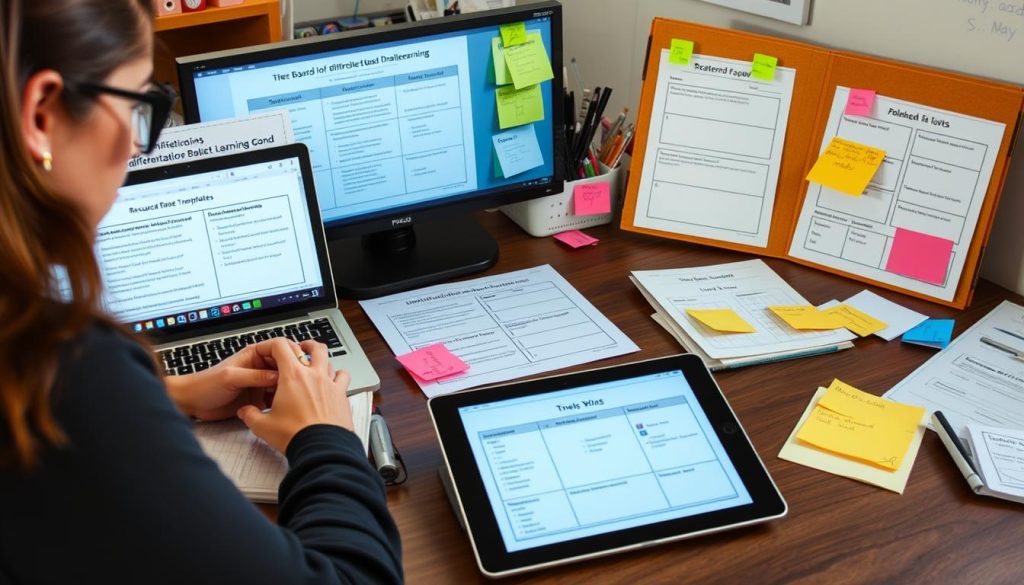
Managing the Differentiated Classroom
- Establish clear routines: Create predictable structures for accessing materials, forming groups, and tracking progress to help students navigate differentiated learning environments.
- Develop student independence: Teach self-management skills that allow students to work productively while you provide targeted support to individuals or small groups.
- Create visual supports: Use color-coding, icons, or other visual cues to help students identify appropriate resources and activities.
- Implement efficient documentation: Develop streamlined systems for tracking student progress, grouping decisions, and differentiation strategies.
Addressing Common Challenges
| Challenge | Solution |
| Time constraints | Focus on differentiating the most critical components of the project rather than every aspect. Collaborate with colleagues to share the workload of creating differentiated resources. |
| Student resistance | Frame differentiation positively as providing appropriate challenge for all learners. Involve students in identifying their learning needs and preferences. |
| Managing multiple activities | Implement station rotations, staggered deadlines, or digital management systems to help coordinate different activities happening simultaneously. |
| Assessment complexity | Develop clear, consistent criteria for essential learning outcomes while allowing flexibility in how students demonstrate those outcomes. |
Professional Growth
Developing expertise in differentiated Project Based Learning is an ongoing journey. Consider these approaches to continue refining your practice:
- Form a professional learning community focused on differentiation strategies
- Observe colleagues who excel at differentiated instruction
- Document and reflect on the impact of different strategies
- Seek feedback from students about which approaches best support their learning
Remember that differentiation, like Project Based Learning itself, is about continuous improvement rather than perfection. Each project provides new opportunities to refine your approach and better meet the diverse needs of your students.
Ready to take your differentiation skills to the next level? Explore our comprehensive professional development resources designed specifically for teachers implementing differentiated Project Based Learning.
Bringing It All Together: The Power of Differentiated Project Based Learning
Project Based Learning and differentiation share a fundamental goal: creating meaningful learning experiences that honor the unique needs, interests, and abilities of every student. By thoughtfully integrating the five differentiation strategies we’ve explored—flexible grouping, tiered activities, choice boards, scaffolded resources, and personalized learning goals—you can create Project Based Learning environments where all students thrive.
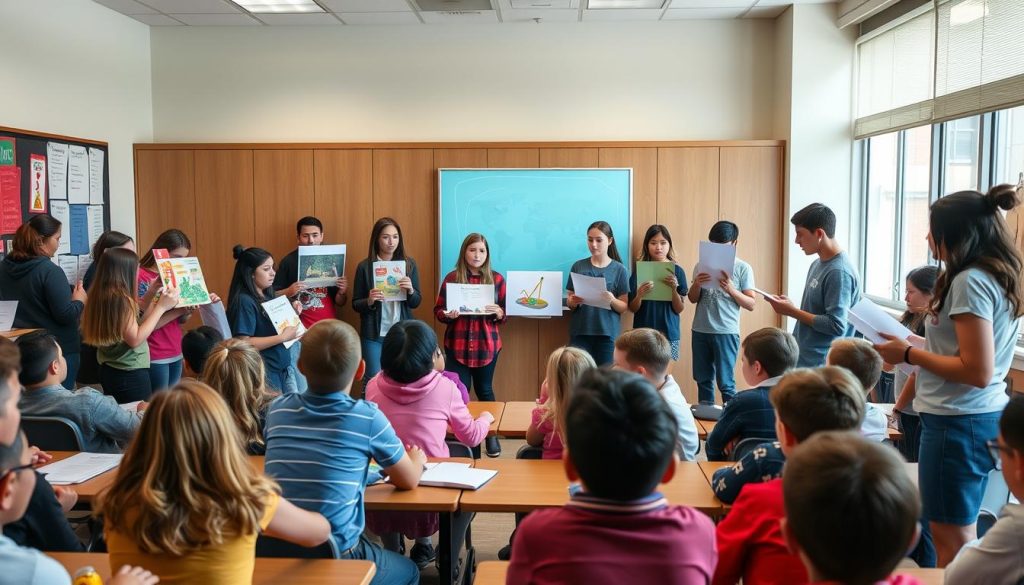
Remember that effective differentiation in Project Based Learning:
- Maintains the integrity and authenticity of the project
- Focuses on essential learning outcomes
- Provides appropriate challenge for all learners
- Honors student agency and voice
- Creates multiple pathways to success
As you implement these strategies, you’ll likely discover that differentiation enhances rather than dilutes the power of Project Based Learning. When students engage with content and processes matched to their learning needs, they develop deeper understanding, greater confidence, and more transferable skills.
The journey toward truly differentiated Project Based Learning is ongoing. Each project provides new opportunities to refine your approach, try different strategies, and better understand your students’ needs. By embracing this continuous improvement mindset, you model for your students the very qualities that Project Based Learning aims to develop: curiosity, problem-solving, and resilience.
We encourage you to start small, reflect often, and celebrate progress along the way. Your efforts to create inclusive, responsive Project Based Learning experiences make a profound difference in your students’ educational journeys—preparing them not just for academic success, but for lives of meaningful contribution in a complex, diverse world.
Ready to transform your Project Based Learning practice?
Explore our comprehensive resources for implementing differentiated instruction in Project Based Learning environments. From ready-to-use templates to in-depth professional development, we’re here to support your journey.
Looking for more specific guidance on differentiation strategies? Check out our specialized differentiation guide with tools and templates you can implement immediately in your classroom.
For additional research-based approaches to Project Based Learning, we recommend exploring PBLWorks and Edutopia’s Project-Based Learning resources.




